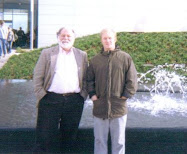The Portal to Texas History:
Embark on a Voyage of Discovery
http://texashistory.unt.edu
http://texashistory.unt.edu
A triple star of excellence for the Portal and youngsters
[[ EXCERPTS BELOW are from a March 2006 report by Dreanna Belden to Will's Texana Monthly on the Portal. Be sure to check out the Portal's up to date offerings.]]
By Dreanna Belden, Coordinator for Grants and Development - UNT Libraries, P. O. Box 305190, Denton, Texas, 76203-5190, Phone: 940-369-8740 & Fax: 940-369-8882
Introduction
Texas history can thrill us with its bigger-than-life heroes and heroines, champions, charlatans, and rogues. Who can forget the bravery of the defenders of the Alamo or the shenanigans of Jim Hogg? Filled with life, Texas history holds the rich potential to enchant school children and captivate learners of all ages. At the University of North Texas Libraries’ Portal to Texas History, the dream of providing unique online historical content is becoming reality.
Introduction
Texas history can thrill us with its bigger-than-life heroes and heroines, champions, charlatans, and rogues. Who can forget the bravery of the defenders of the Alamo or the shenanigans of Jim Hogg? Filled with life, Texas history holds the rich potential to enchant school children and captivate learners of all ages. At the University of North Texas Libraries’ Portal to Texas History, the dream of providing unique online historical content is becoming reality.
In 2002, the UNT Libraries began planning the Portal to Texas History project to address the recognized needs of two user groups: students, teachers, researchers and life-long learners wanting improved access to primary source materials held in libraries, museums, historical societies and archives around the state; and institutions needing assistance with digitizing and making copies of their holdings available on the internet. Creation of the technical infrastructure for the project proceeded with funding from a competitive Texas Telecommunications Infrastructure Fund grant.
The Portal to Texas History currently hosts content from twenty-five collaborative partners, such as the Dallas Historical Society, the University of Houston, the Texas State Library and Archives Commission, and many others. Through recently funded grants, the Portal will be adding materials from twenty new partners in the next two years. The Portal currently hosts over 46,000 pages of primary source materials, and this amount will exceed 100,000 by the end of 2006.
Portal Mission Statement
The Portal to Texas History offers students and lifelong learners a digital gateway to the rich collections held in Texas libraries, museums, archives, historical societies, and private collections. The Portal team at the University of North Texas will provide strong leadership by supporting collaborative efforts with its partners, while pursuing the goals of accessibility, best practices, and preservation of historical material.
Portal Highlights for March 2006. Resources on the Portal to Texas History. The Portal currently hosts over 46,000 pages of primary sources, and will exceed 100,000 pages of content by the end of 2006. All of the materials are freely accessible via the internet, and include books, maps, letters, diaries, and photographs. Materials in the spotlight this month include:
Maps. Map of the Missouri, Kansas and Texas Railway. Published by Rand McNally & Co. around 1877, this map includes train schedules and advertisements. ““How’s Your Health?” If not very good, why not take a trip down through the wonderful Indian Territory over the picturesque Mo., Kan. & Tex. R’y, enter Texas at Denison, and then passing on down through the wonderful cotton fields and stock ranches, visit the beautiful and historical city of San Antonio, the oldest, healthiest and most beautiful city on the Continent, being to this country what Nice is to Europe, the place of resort for all failing in health. Consumption, Asthma and Rheumatism never originate, and, if not too far advanced, a residence will cure these maladies. In a population of 20,000, the death rate last year was only twelve in 1,000, smaller than in any other city in the world.” http://texashistory.unt.edu/permalink/meta-pth-2440
Books. Rangers and Sovereignty, written by Texas Ranger Dan W. Roberts, and published in 1914. Captain Roberts listed two reasons for writing this memoir. First, he wanted to record the accomplishments of his command, Texas Ranger Company ‘D’ of the Frontier Battalion. Second, his friends in his company had pestered him to write a true account of their actions, illustrating the needs of the service, their performance of duty, and their part in ending the “Indian problem” plaguing Texas. He proudly stated that “our little part is richly treasured in the archives of our ‘native health’ –Texas. Our sorrows are there also, in many a grave not even marked by human hands.” http://texashistory.unt.edu/permalink/meta-pth-5833
Photographs. The U.S. Army Corps of Engineers Collection comes to us from the Dallas Historical Society, and this fascinating photo collection features over 650 images that document lock and dam projects throughout Texas in the 1910-1920s. View photos of construction on the Trinity River, Brazos River, Sabine-Neches Canal, and Caddo River, as well as photographs of the sinking of the snag-boat Trinity on February 13, 1910. http://texashistory.unt.edu/browse/collection/ACE/
Portal Mission Statement
The Portal to Texas History offers students and lifelong learners a digital gateway to the rich collections held in Texas libraries, museums, archives, historical societies, and private collections. The Portal team at the University of North Texas will provide strong leadership by supporting collaborative efforts with its partners, while pursuing the goals of accessibility, best practices, and preservation of historical material.
Portal Highlights for March 2006. Resources on the Portal to Texas History. The Portal currently hosts over 46,000 pages of primary sources, and will exceed 100,000 pages of content by the end of 2006. All of the materials are freely accessible via the internet, and include books, maps, letters, diaries, and photographs. Materials in the spotlight this month include:
Maps. Map of the Missouri, Kansas and Texas Railway. Published by Rand McNally & Co. around 1877, this map includes train schedules and advertisements. ““How’s Your Health?” If not very good, why not take a trip down through the wonderful Indian Territory over the picturesque Mo., Kan. & Tex. R’y, enter Texas at Denison, and then passing on down through the wonderful cotton fields and stock ranches, visit the beautiful and historical city of San Antonio, the oldest, healthiest and most beautiful city on the Continent, being to this country what Nice is to Europe, the place of resort for all failing in health. Consumption, Asthma and Rheumatism never originate, and, if not too far advanced, a residence will cure these maladies. In a population of 20,000, the death rate last year was only twelve in 1,000, smaller than in any other city in the world.” http://texashistory.unt.edu/permalink/meta-pth-2440
Books. Rangers and Sovereignty, written by Texas Ranger Dan W. Roberts, and published in 1914. Captain Roberts listed two reasons for writing this memoir. First, he wanted to record the accomplishments of his command, Texas Ranger Company ‘D’ of the Frontier Battalion. Second, his friends in his company had pestered him to write a true account of their actions, illustrating the needs of the service, their performance of duty, and their part in ending the “Indian problem” plaguing Texas. He proudly stated that “our little part is richly treasured in the archives of our ‘native health’ –Texas. Our sorrows are there also, in many a grave not even marked by human hands.” http://texashistory.unt.edu/permalink/meta-pth-5833
Photographs. The U.S. Army Corps of Engineers Collection comes to us from the Dallas Historical Society, and this fascinating photo collection features over 650 images that document lock and dam projects throughout Texas in the 1910-1920s. View photos of construction on the Trinity River, Brazos River, Sabine-Neches Canal, and Caddo River, as well as photographs of the sinking of the snag-boat Trinity on February 13, 1910. http://texashistory.unt.edu/browse/collection/ACE/






No comments:
Post a Comment